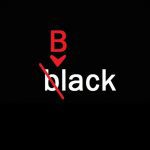School’s Out
“You’ll love this story,” Mary Gordon tells me. We’re sitting in her Toronto office and I’m interviewing her about the program she started. Called Roots of Empathy, it sends instructors into classrooms to teach children how to understand each other. She tells me about a man who recently contacted her to say that after taking one of her sessions as a boy, he realized he was a bully. Now a teacher, he tries to prevent others from acting the way he did. Gordon thinks I’ll enjoy this tale because she’s found me out: I used to be a teacher—not that I was planning on telling her that when I walked in.
When I had asked her questions only someone who had studied the education curriculum would know, she seemed impressed. So I had to admit: “Well, I used to be a teacher.” It seemed irrelevant; it was another life that had nothing to do with my current one. I wanted to do my job as a journalist—not bang out my past for a stranger, as I’ve done hundreds of times. Gordon didn’t ask me any of this, though; she was just happy she could speak to me as a peer. And I realized that my past career could help in my current work.
Life experiences, professional or not, allow journalists to insert themselves and their knowledge directly into their stories. But this comes with positives and negatives: knowledge is helpful, but avoiding bias is a challenge.
We trust certain journalists as experts because of their previous professions. Author and journalist Michael Lewis, famous for books such as The Big Short, Moneyball and The Blind Side (all of which have been made into major motion pictures), was a bond salesman. “Twenty five years ago,” he wrote in New Republic, “I quit a job on Wall Street to write a book about Wall Street.” Meanwhile, Vanity Fair correspondent William Langewiesche, a former professional pilot, writes about airplane crashes from the perspective of a journalist. He looks at the lives of the people while using his aviation background to explain what happened and the technology involved.
Sharing her experiences is something Deborah Reid, who worked as a chef for 26 years, believes is an important part of her work as a writer. She has a particular interest in women who work in professional kitchens. For an essay on the sexism of the chef uniform, which is made to fit men, she interviewed three women—but much of her knowledge came from her own experience. “At first, that was just fine by me…I didn’t want to be different.” she wrote. Later, though, Reid realized she was abandoning her gender in an effort to maintain her status as a chef.
But being too close to a subject can also make writing more difficult. Journalists’ views can cloud the way they write or speak about a topic. That was another worry I had in the Gordon interview. I wanted to hear about her program and think about it critically, not let my biases throw me off. I needed to listen to her plan and decide, as an outsider, if it was viable, without getting pulled into what I wanted to believe as a teacher: that teaching empathy is possible. I had to evaluate, as a journalist, if it really was.
Lisa Bendall, who worked in the disability field for many years before going into journalism and whose husband lives with a disability, believes writing what you know has its “challenges and its upsides.” Although her background gives her credibility with sources, the desire to protect her expert status means she needs more control over the final product. She says, “The last thing you want to do is see your article in print and there is some horrific insertion that I would never want to be associated with.”
By the time my article came out in This magazine, I couldn’t remember why I thought it was so important not to reveal my background to my sources. Gordon had told me it was helpful to know I was a teacher. “That, to me, is a bonus in anyone who is interviewing me, that I feel that we are on the same human path,” she said. She shares information about her program differently depending on who’s asking.
The headline was “In their shoes,” based on an anecdote I included in the story. A teacher I worked with printed out illustrations of shoes and had kids step onto one another’s when there was a conflict. I hoped such real-life details gave the story credibility, as well as emotional power.
by Blair Mlotek
Blair Mlotek is the Online Handling Editor for the Spring 2016 issue of the Ryerson Review of Journalism.













































